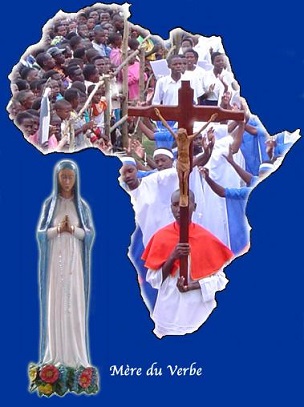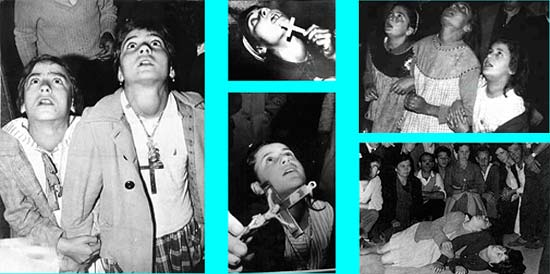Our Lady of Kibeho

I am the Mother of the Word
1981 - 1988
Kibeho is a small site located in the southern part of Rwanda, in the administrative district of Nyaruguru. It is 36 km from the Bishop of Gikongoro’s residence and 30 km from the Bishop of Butare’s residence. Kibeho is also the name given to one of the parishes of the diocese of Gikongoro, founded in 1934 and dedicated to Mary, Mother of God.
Our Lady of Kibeho is the name given to Marian apparitions concerning several adolescents, in the 1980s in Kibeho, south-western Rwanda. The apparitions communicated various messages to the schoolchildren, including an apocalyptic vision of Rwanda descending into violence and hatred, possibly foretelling the 1994 Rwandan Genocide.
In 2001, the local bishop of the Catholic Church officially recognised the visions of three schoolchildren as authentic.
The Kibeho apparitions began on Nov. 28, 1981, at a time of increasing tension between the Tutsis and the Hutus. They occurred at Kibeho College, a secondary school for girls, and included an apocalyptic vision of Rwanda descending into violence and hatred which many believe foretold the 1994 Rwandan genocide. The Virgin Mary appeared to the group with the name "Nyina wa Jambo" ("Mother of the Word") synonymous with "Umubyeyi W'Imana" ("Mother of God").The teenage visionaries reported that the Virgin Mary asked everyone to pray to prevent a terrible war. In the vision of Aug. 19, 1982, they all reported seeing violence, dismembered corpses and destruction.
The longest series of visions were attributed to Alphonsine Mumureke who received the first vision on November 28, 1981 and the last on November 28, 1989. Anathalie Mukamazimpaka's visions began in January 1982 and ended on 3 December 1983. Marie Claire Mukangango had visions for six months, lasting from 2 March 1982 until 15 September 1982. She was later killed in the massacre of 1995 at the same location.

During his 1990 visit to Rwanda, Pope John Paul II exhorted the faithful to turn to the Virgin as a “simple and sure guide” and to pray for greater commitment against local divisions, both political and ethnic.
In the 100 days that followed the April 1994 assassination of dictator Juvénal Habyarimana, by most accounts, 800,000 Rwandans, by some accounts, over one million, were slaughtered by their countrymen and, in some cases, their next-door-neighbors. The violence was the culmination of intensifying animosity between the two ethnic groups – the Hutus and Tutsis – and the civil war that had preceded it. Twice, Kibeho was the sight of a massive massacre, first at the parish church in April 1994, and then a year later in April 1995 where more than 5,000 refugees who had taken shelter at Kibeho were shot by soldiers.
Approved sightings:
Only the visions of the first three (Alphonsine, Nathalie, and Marie Claire aged 17, 20 and 21) received local Bishop Augustin Misago's solemn approval.
Shrine:
The Marian sanctuary at Kibeho was named "Shrine of Our Lady of Sorrows" in 1992. The first stone was laid on 28 November 1992. In a 2003 agreement between the local ordinary and the Society of the Catholic Apostolate (Pallotines), the rectorate of the Shrine of Our Lady of Kibeho is entrusted to the Pallotine Fathers. The rector is appointed by the local bishop and the Regional Pallottine Rector.
The pilgrimage site of Kibeho is one of the few Marian shrines in Africa recognized by the Pope. In 1982, Bishop Augustin Misago of Gikongoro initiated an investigation into the apparitions. In 2001, their authenticity was officially recognized by Pope John Paul II. We have updated this information.